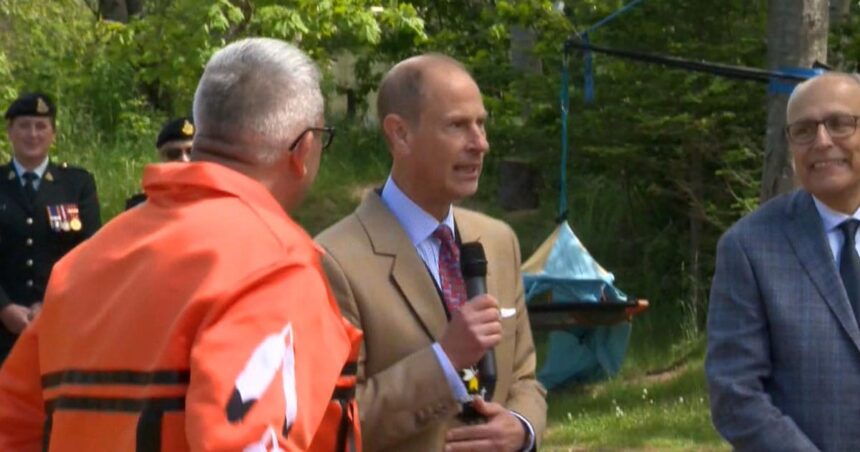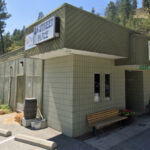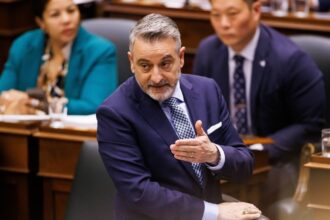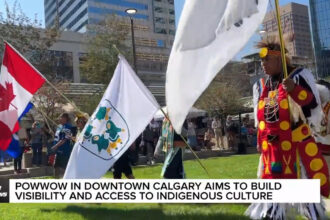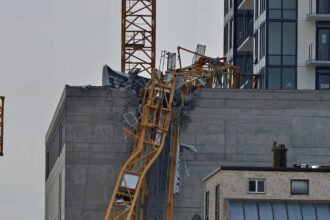In a symbolic convergence of namesake and heritage, Prince Edward arrived on Prince Edward Island Monday morning, launching a four-day Canadian tour that began with a meaningful engagement with the island’s Indigenous peoples. The Duke of Edinburgh’s visit marks his first official return to the Maritime province since 2007, drawing enthusiastic crowds despite overcast skies and occasional drizzle.
“This island has always held a special place in my heart,” the prince remarked as he stepped onto the tarmac at Charlottetown Airport, where he was greeted by provincial dignitaries and a small gathering of royal enthusiasts. “There’s something quite remarkable about visiting a place that shares your name.”
The highlight of the day came during Prince Edward’s visit to Abegweit First Nation, where Mi’kmaq community leaders welcomed him with traditional ceremonies. Chief Roderick Gould Jr. presented the Duke with a handcrafted quill box, explaining its cultural significance as a symbol of the Mi’kmaq people’s enduring relationship with the land.
“Today represents an opportunity to strengthen understanding between the Crown and Indigenous communities,” Chief Gould told CO24 News. “We shared with His Royal Highness our ongoing work in cultural preservation and economic development, as well as the challenges we continue to face.”
During the visit, Prince Edward toured the community’s cultural center, where he observed traditional Mi’kmaq artisans at work and participated in a smudging ceremony. The prince appeared particularly interested in youth initiatives, spending nearly an hour speaking with students from the community’s education programs about their aspirations and cultural identities.
Provincial Premier Dennis King, who accompanied the royal visitor throughout the day, emphasized the economic impact of such high-profile visits. “Royal tours continue to generate significant tourism interest in our province,” King explained to CO24 Canada. “We anticipate this visit will contribute to our post-pandemic recovery efforts and showcase Prince Edward Island to potential visitors worldwide.”
The afternoon itinerary included a visit to Province House National Historic Site, where the prince viewed the Confederation Chamber and engaged with historians about Canada’s founding. Later, at Government House, he presented Duke of Edinburgh Awards to accomplished local youth, continuing his father Prince Philip’s legacy of recognizing young people’s achievements.
The tour comes at a pivotal moment for the monarchy in Canada. Recent polling conducted by Angus Reid Institute indicates shifting attitudes toward royal ties, with 52 percent of Canadians believing the country should reconsider its constitutional relationship with the monarchy upon the end of Queen Elizabeth II’s reign. Prince Edward Island, however, maintains some of the strongest monarchist sentiment in the country.
Dr. Caroline Thompson, professor of Canadian political history at Dalhousie University, notes that these royal visits serve multiple purposes. “Beyond the ceremonial aspects, these tours function as soft diplomacy,” Thompson told CO24 Politics. “They reinforce historical connections while allowing the monarchy to demonstrate relevance in contemporary Canadian society.”
The prince’s schedule for the remainder of his Canadian visit includes stops in Nova Scotia and Newfoundland, where he will focus on environmental conservation initiatives and organizations supporting veterans.
As twilight settled over Charlottetown Harbor, with the prince attending a reception hosted by Lieutenant Governor Antoinette Perry, one couldn’t help but wonder: In an era of constitutional debates and evolving national identities, what role will these personal connections between royalty and communities play in shaping the future relationship between Canada and the Crown?

